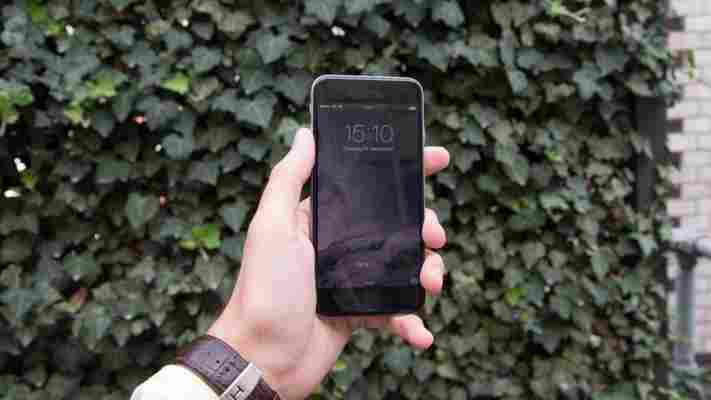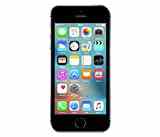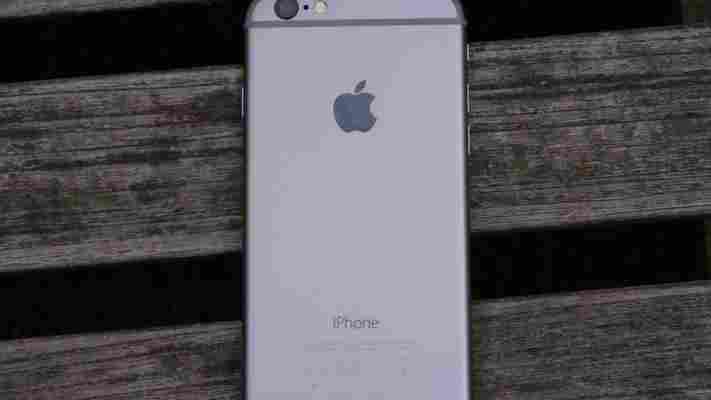Apple iPhone 6 Apple iPhone 6 review: A good iPhone that belongs in the past
The iPhone 6 was a stellar handset but has since been usurped by the iPhone 6S , the iPhone 7 – as well as the much newer iPhone 8 . In fact, it’s now hard to buy an iPhone 6 first-hand, with Apple instead offering the excellent iPhone SE as its cheapest handset.

We’d say that if you’re looking for a budget handset (at least if you're set on getting an Apple device) you’ll want to opt for the £280 iPhone SE . Alternatively, there are many incredible budget Android smartphones which are far more impressive – here's our pick of the very best you can find right now .
READ NEXT: iPhone 8 review: A worthy upgrade from the iPhone 7?
Our original review continues below.


iPhone 6 review: Build quality
The one area that Apple hasn't changed for the iPhone 6 is the build quality, and this model is the best yet. Sticking to its usual design regime, the iPhone 6 uses a completely new design. Gone are the square edges of the iPhone 5S, replaced with a curvier, more rounded body. Given the extra size of the phone, the rounded edges don't just look great, they make the phone easier to hold and we've not once dropped our handset by mistake.
Apple's usual attention to detail is ever-present, with the front glass curving gently to meet the sides of the case, so you can't feel the join. It's this kind of quality that sets the iPhone apart from its rivals. An aluminium case gives the iPhone 6 the high-quality look and feels what we expect from Apple. Plastic runs between the individual metal parts, in order to allow for uninterrupted mobile and wireless reception. It's been neatly done and you can barely feel the join. Available in Space Grey, Silver or Gold, each colour has its own merits, so it's really a matter of which one you prefer.

While the iPhone 6 has a bigger footprint than the iPhone 5S, there's not a lot of difference between the phones. For starters, the iPhone 6 is just 6.9mm thin, making it thinner than the iPhone 5S. Impressively, at 129g, the new handset is only 17g heavier than the old one.
With a bigger screen, some design changes have had to be made. The most obvious one is that the power button is no longer on the top but has been relocated to the upper right-hand side. This makes it much easier to reach with a finger or thumb, even more so than with the iPhone 6 Plus.
We're pleased to see that the other side of the phone still has the physical volume buttons and the silent switch. A physical switch to go into silent mode is a really useful thing to have and much easier than messing around with on-screen controls.
iPhone 6 review: Display quality
With its 4.7in display, Apple has had to up the iPhone 6's resolution in order to keep the Retina tag. According to Apple, this is the point at which you can no longer see individual pixels. In the iPhone 6's case, this is a resolution of 1,334x750 - slightly more than 720p. While the resolution may be higher, the pixel density is the same 326ppi as the iPhone 5S. In other words, you get the same screen sharpness as before.
Other handset manufacturers have managed to squeeze in Full HD displays at this size, so why hasn't Apple? The simple answer is because it doesn't feel the need to. In fact, the issue of image quality is far more than simple pixel density. Comparing the iPhone 6 to the Nexus 5 (5in screen, Full HD, 445ppi), we found that the iPhone 6 was actually slightly sharper; comparing it to the LG G3 (5.5in screen, 2,560x1,440, 538ppi), the G3 was the sharper handset. In all of these cases, it has to be said that the difference is rather marginal, and in practical terms, the iPhone 6's screen is more than sharp enough. You certainly don't look at text or images and notice that any jagged lines or softening due to there not being enough resolution.
There's a good argument that adding more pixels would just drain the battery faster and give the CPU more work to do. In fact, only using the screen resolution that's required is something that's becoming more popular, as you can see from the 720p Samsung Galaxy Alpha .
That doesn't mean that Apple hasn't made any changes to the screen. While it still uses a LED-backlit IPS panel, this time around it uses dual-domain pixels. This technology helps improve viewing angles and even looking at the screen almost edge on we couldn't detect any noticeable colour shift.
Apple has also stated that the new screen has better contrast and black levels than on previous handsets. Our colour calibrator confirmed this, with a black level reading of a low 0.37cd/m2 and a contrast ratio of 1,456:1. The screen brightness of 543cm/m2 is impressive too, meaning you can see it clearly in direct sunlight, while blacks are still inky and dark.
Colour accuracy is also very good, with our colour calibrator measuring the phone as capable of producing 95.1% of the sRGB colour gamut (the graph below shows the gamut, with the dotted line representing sRGB). This puts this screen in the top leagues of LCD displays. Super AMOLED screens, such as that on the Samsung Galaxy S5 have better colour reproduction and black levels, although they're dimmer and some find their colours a little over-saturated.
In our regular image tests, photos on the iPhone 6 looked great, with natural colours and plenty of detail throughout the image. Overall, it's a great screen, as you'd expect from an Apple handset; it's not the best display available though there's practically no cause for complaint.
Although we were all hoping for a sapphire glass display, that technology's not quite ready yet. Instead, Apple has used ion-strengthened glass, which is both scratch and shatter resistant; as always, treat the phone with care and use a decent case to add extra protection.